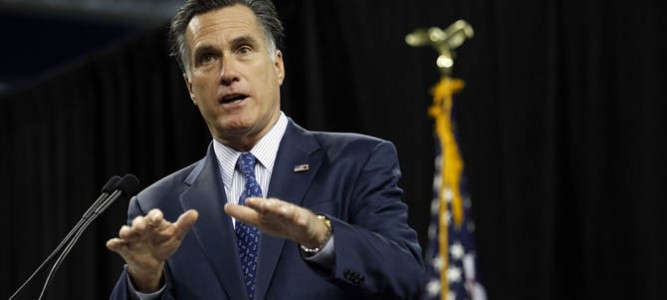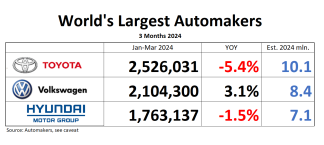Of all the issues broached in the presidential campaign, the auto-industry rescue of 2008-09 stands out as an example of the triumph of spin over facts.
Keying off the New York Times’s headline for Mitt Romney’s 2008 op-ed, “Let Detroit Go Bankrupt,” President Obama has argued that the only alternative to his “bold” rescue of General Motors and Chrysler would have been a disorderly liquidation of the entire U.S. auto industry. Yet a close reading of Mr. Romney’s op-ed reveals that his proposal was actually quite similar to the course of action the president took, right down to government funding of the bankruptcy reorganization process and warranty backstops.
So if the auto bailout is not simply the choice between government intervention and the collapse of an entire industry, what is the difference between the two candidates’ positions?
When the president forced GM GM +1.13% and Chrysler into bankruptcy court, the White House’s auto task force used the process to execute a prearranged reorganization it had masterminded with political allies. By contrast, Mr. Romney called for a true bankruptcy, in which creditors and stakeholders negotiate reorganization together, with the government merely providing the minimum support needed to prevent disorderly liquidation. In retrospect, Mr. Romney’s approach not only would have produced outcomes superior to the president’s, it was actually the braver course of action.
To understand why, it is necessary to examine GM and Chrysler’s behavior in the weeks and months that preceded their bailouts. Thanks to inept management and a rapacious union, GM and Chrysler had been shedding market share and jobs for decades before the credit crunch of 2008 brought the global economy to its knees. Despite rocky shores and rough waters, the managements of GM and Chrysler and their United Auto Workers partners never imagined they would have to pay the true cost of their failure to compete.
In fact, when Mr. Romney’s op-ed was published in November 2008, the leaders of both GM and Chrysler were insisting that “bankruptcy is not an option,” because they were sure nobody would buy a car from a bankrupted company, despite both having already repeatedly begged Congress for a government bailout. Industry watchers later discovered that, despite an emergency transfusion from the Bush administration, the auto makers never prepared contingency plans before President Obama decided to initiate a bailout and reorganization.
This failure to prepare bankruptcy plans was more than inexcusable mismanagement, it was akin to blackmail. Without responsible preparations in place for a worst-case scenario, GM and Chrysler could argue that unless the government intervened they wouldn’t be able to secure financing for a bankruptcy in the necessary time frame. They would have to liquidate their holdings and assets, which would jeopardize if not crush America’s entire auto-manufacturing supply chain.
Seen in this light, far from being a brave decision made with middle-class workers in mind, the auto bailout was a craven submission to corporate executives who would rather hold the economy hostage than face the consequences of their irresponsible actions. And Mr. Romney’s recommendation that GM and Chrysler reorganize in bankruptcy—that they finally face the costs of their failures—was an act of bravery.
Mr. Romney was well aware of the risk of an industrywide collapse, arguing in his op-ed in favor of a government role in the bankruptcies, namely to “provide guarantees for post-bankruptcy financing and assure car buyers that their warranties are not at risk.” With government-backed warranties and guaranteed debtor-in-possession financing, the industry could have avoided a meltdown just as effectively as it did with the president’s approach.
Of course, some debate exists about the amount of private funding that would have been available for the GM and Chrysler bankruptcies at the height of the credit crunch, but even had none been available, a fully government-funded conventional bankruptcy would still have been preferable to President Obama’s political reorganization.
The White House auto task force pushed a dealership cull on the auto makers that eliminated over 2,000 GM and Chrysler dealerships, forcing tens of thousands of Americans onto unemployment rolls, all with no appreciable benefit to either company.
Making matters worse, the Treasury Department issued notices which let “New GM” acquire $45 billion in tax write-offs from its defunct predecessor, a blatant violation of basic bankruptcy law. This not only deprived the government of billions in tax revenue, it hid the true cost of the bailout while disproportionally benefiting the UAW, an unsecured creditor.
By giving the UAW’s unsecured claims against GM and Chrysler a higher priority than those of secured creditors, the government’s reorganization further damaged bankruptcy precedent. The net result was a $26 billion transfer to a key Democratic ally and political donor, according to analysis by scholars from the Heritage Foundation and George Mason University.
GM and Chrysler could have averted tens of thousands of lost jobs, and the government could have preserved billions of dollars in tax revenue, by undergoing a true bankruptcy reorganization, even if the government had provided full debtor-in-possession financing.
In a true bankruptcy guided by the law rather than by a sympathetic, rule-bending political task force, GM and Chrysler would have more fully faced their competitive challenges, enjoyed more leverage to secure union concessions, and had the chance to divest money-losing operations like GM’s moribund Opel unit. True bankruptcy would have lessened the chance that GM and Chrysler will stumble again, a very real possibility in the brutally competitive auto industry.
Certainly President Obama threw enough money at GM and Chrysler to create a short-term turnaround, but if the auto makers find themselves on hard times and return to Washington with hats in hand, his policy will have been no rescue at all.
This story from the SWWE (Stories We Wrote Elsewhere) archives appeared first on November 2, 2012 in the Wall Street Journal






